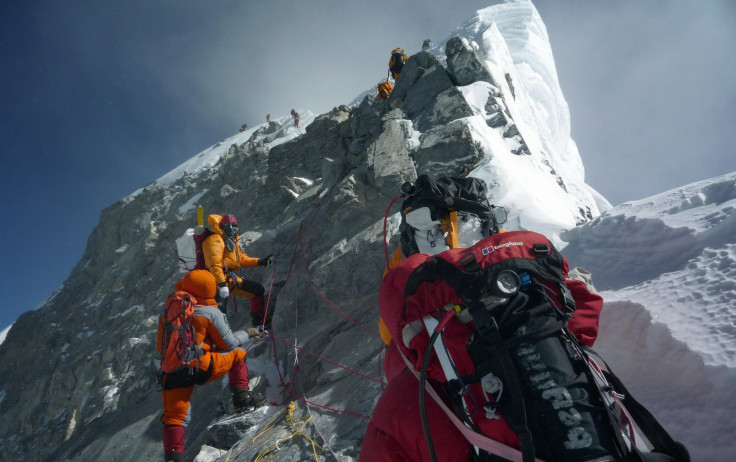Mount Everest Officials Could Bar Amateur, Elderly And Disabled Climbers From Attempting Summit

The young, old, inexperienced and disabled may soon be banned from climbing Mount Everest. Nepal's tourism officials are considering new rules ahead of the spring climbing season that would allow only certain people to attempt to scale the world's highest peak, the Guardian reported Monday. Excluded would be people under 18 and over 75, as well as potential climbers with severe disabilities.
“We cannot let everyone go on Everest and die. If they are not physically and mentally fit it will be like a legal suicide,” Tourism Minister Kripasur Sherpa told the Guardian. “Only those who can go on their own will be given permission.”
About 700 people try to climb Everest, which stands about 29,000 feet tall, every year. Eight people died in 2013, but since the first ascent in 1953 the success rate has been about 60 percent, according to mountain climber Alan Arnette's reading of the Himalayan Database. This year saw Everest's deadliest accident ever in the April earthquake that killed 19 people, most of them Sherpa guides, and injured about 60.
Nepal Tourism Department Director Govinda Karki told Agence France-Presse stricter requirements are needed to keep the experience safe. Before getting a permit to climb Everest, a climber would have to prove he or she had summitted another peak of at least 6,500 meters -- about 21,300 feet. Visually and physically impaired people would be banned from heading up the mountain.
"It is not a matter of discrimination. How can you climb without legs?" Karki said. "We want to make the mountains safer for everyone, so we have to insist on some rules."
The proposed rules are already encountering opposition from people like Elizabeth Hawley, an Everest historian who lives in Nepal. "I don't think the government is in any position to judge someone's capacities or draw that line for mountaineers," she told AFP, pointing to examples where disabled climbers reached the peak.
© Copyright IBTimes 2024. All rights reserved.






















